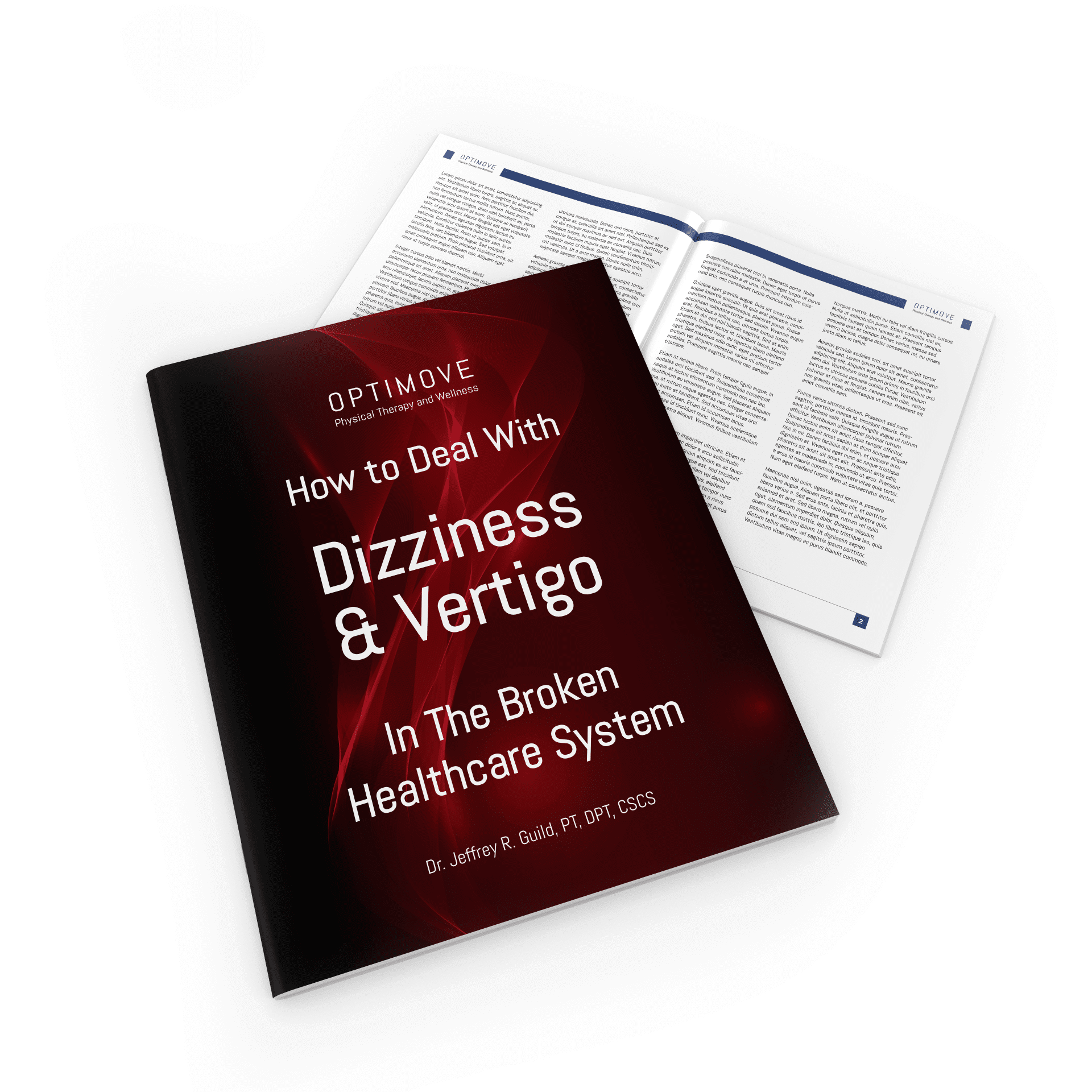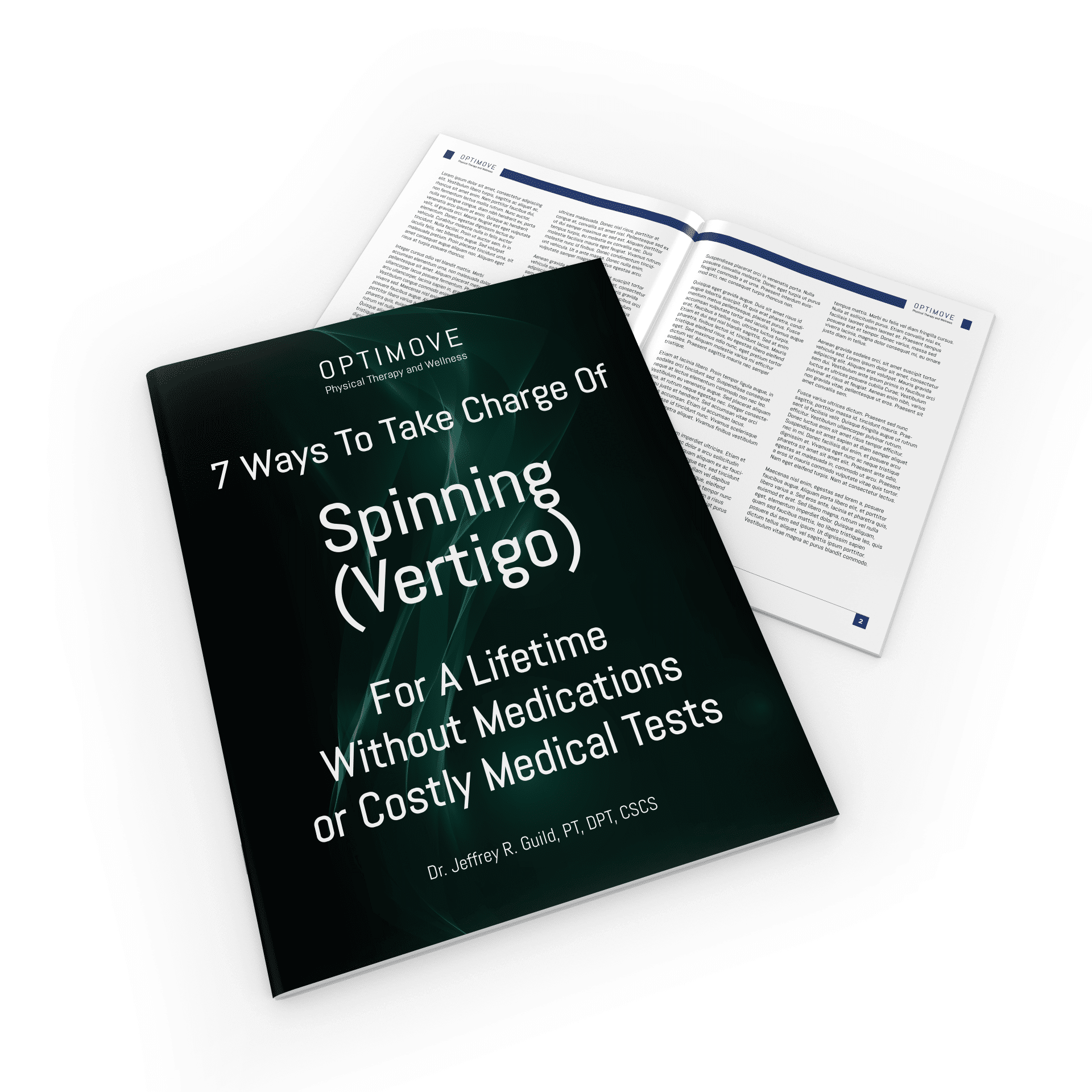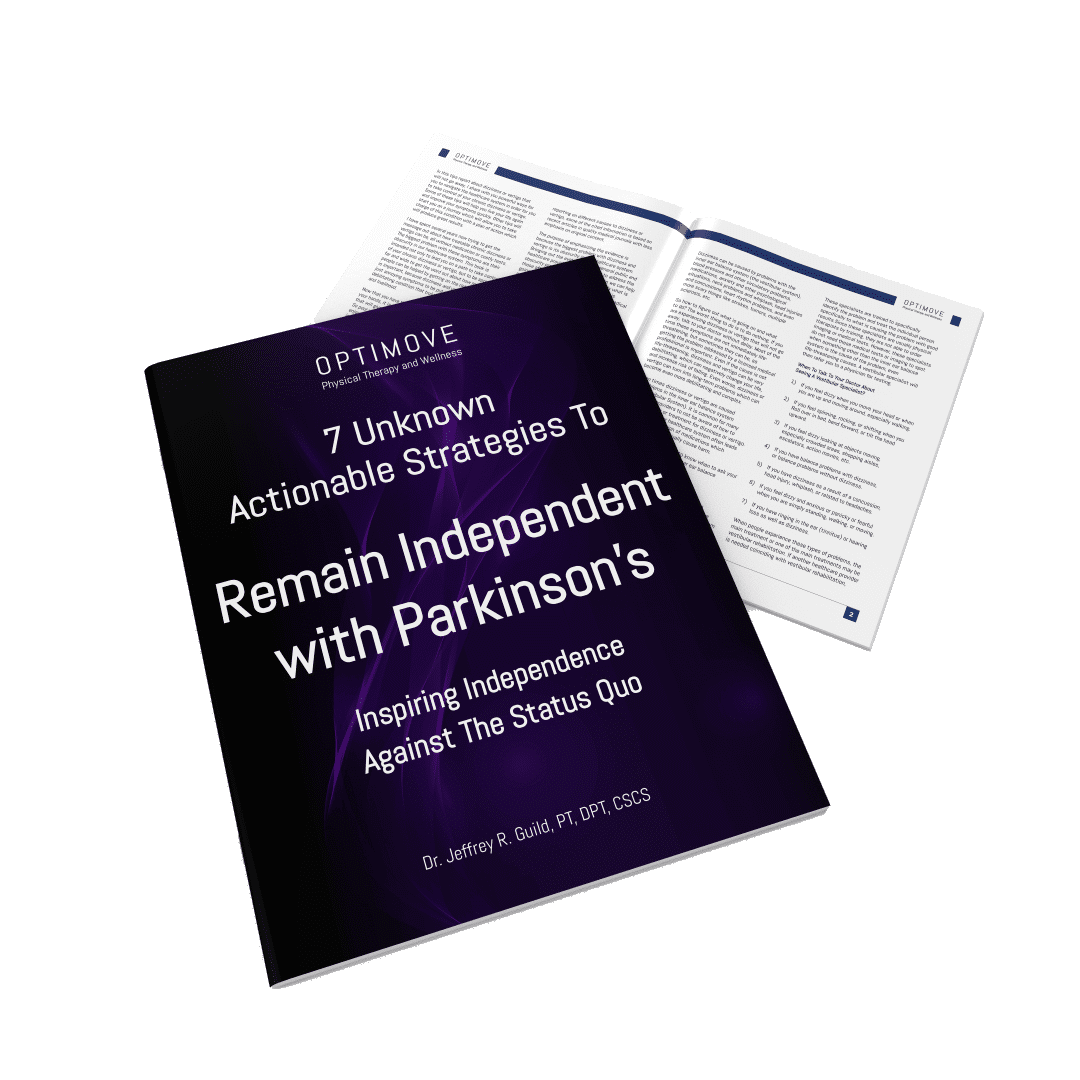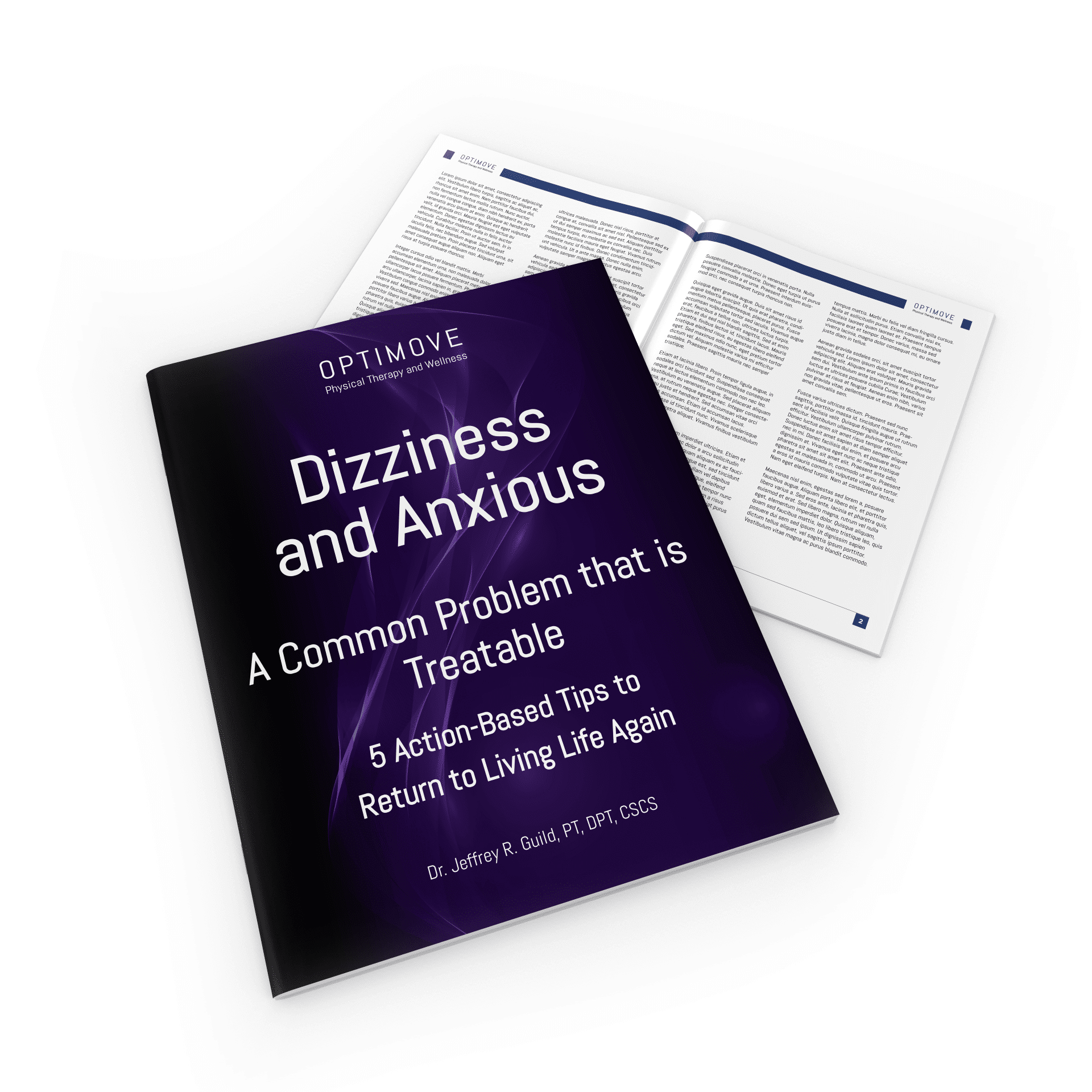A third of 70 year olds and over half of people by age 85 experience the symptoms of dizziness or vertigo.(1)(2) Over half the time, the main cause of this dizziness/vertigo with older people is a disorder called Benign Paroxysmal Positional Vertigo (BPPV).(3) BPPV happens when crystals in the inner ear balance system (The Vestibular System) move from a place where they normally are located to a place where they should not be located.(4)(5)(6) The great news is BPPV is completely treatable in the vast majority of cases by a simple repositioning maneuver.(7)(8)(9)(10)(11)
The challenge is the diagnosis and treatment for BPPV is already a problem in the current healthcare system due to expensive(12)(13)(14) over-medication and imaging(11)(12)(13)(14)(15)(16) and very little use of these simple repositioning maneuvers.(11)(16)
What makes BPPV even more difficult with the older population is the symptoms are not as clear-cut compared to younger people,(17)(18) making the dizziness amongst older people even more difficult to sift through for healthcare providers.
While the symptoms for BPPV are usually a spinning sensation, especially when rolling over in bed,(16) older people may more frequently describe more of an unsteadiness(17) and different types of dizziness.(18) Older people also take longer to get a diagnosis(18) and even to seek treatment.(17)
The difficulty of healthcare providers to recognize BPPV accurately in older people is especially problematic since vertigo results in more falls and even fractures.(19) Simply treating BPPV dramatically decreases falls even if nothing else is done.(20)(21) But BPPV often goes unrecognized in the older population.(22)
So you may be asking: Ok… So if it’s as easy as a repositioning maneuver to move the crystals, who do you see about that?
A trained experienced specialist (11)(23)(24) is able to diagnose(25) and treat(26) BPPV properly. They will also be able to recognize if something even more serious or life-threating is the cause of the vertigo(27) and then refer you to the appropriate healthcare provider.
These specialists are often-times called Vestibular Specialists. Vestibular Specialists are healthcare providers who specialize in the inner ear balance system and its holistic effects on the body.
What About Preventing Vertigo?
We are now learning there are ways to reduce the risk of BPPV in the first place. Scientists are now seeing a big connection with BPPV and bone health(28)(29)(30)(31) and when people have a combination of medical problems.(32)(33) In fact, factors that by themselves determine whether someone will get vertigo are blood pressure, cholesterol, stroke, and migraine.(16)
So working on your health pays off.
Like many things, we are now learning that eating well, exercising, and inquiring with your doctor about your bone health could pay big dividends when thinking about maintaining independence as you get older and preventing dizziness and vertigo.
If you are feeling symptoms of dizziness/vertigo, and you and your doctor have not figured out the cause, or suspect the problem is inner ear balance related, ask your doctor if a Vestibular Specialist would be right for you to figure out the cause of your dizziness or vertigo.
And in the meantime, keep exercising, moving, and living life.
To Read About More Powerful Solutions To Take Charge Of Your Vertigo Click Here To Download Our Free Tips Report
Health Advice Disclaimer
We make every effort to ensure that we accurately represent the injury advice and prognosis displayed throughout this blog. However, examples of conditions and their prognosis are based on typical representations of those conditions that we commonly see in physical therapy. The information given is not intended as representations of every individual’s potential condition. As with any injury, each person’s symptoms can vary widely and each person’s recovery can also vary depending upon background, genetics, previous medical history, psychological status and history, motivation to follow physical therapy advice and various other factors.
It is impossible to give a 100% complete accurate diagnosis and prognosis without a thorough physical examination and likewise the advice given cannot be deemed fully accurate in the absence of this examination from a vestibular specialist.
Significant injury risk is possible if you do not follow due diligence and seek suitable professional advice about your injury. No guarantees of specific results are expressly made or implied in this blog.
References
1) Jönsson R, Sixt E, Landahl S, Rosenhall U. Prevalence of dizziness and vertigo in an urban elderly population. J Vestib Res. 2004;14(1):47-52.
2) Oghalai JS, Manolidis S, Barth JL, Stewart MG, Jenkins HA. Unrecognized benign paroxysmal positional vertigo in elderly patients. Otoaryngol Head Neck Surg. 2000;122(5):630-634.
3) Chau AT, Menant JC, Hübner PP, Lord SR, Migliaccio AA. Prevalence of Vestibular Disorder in Older People Who Experience Dizziness. Front Neurol. 2015;6(268)
4) Hornibrook J. Benign Paroxysmal Positional Vertigo (BPPV): History, Pathophysiology, Office Treatment and Future Directions. In J Otolaryngol. 2011;2011:1-13.
5) Parnes LS, McClure JA. Free-floating endolymph particles: a new operative finding during posterior semicircular canal occlusion. Laryngoscope. 1992;102(9):988-992.
6) Kao WT, Parnes LS, Chole RA. Otoconia and otolithic membrane fragments within the posterior semicircular canal in benign paroxysmal positional vertigo. Laryngoscope. 2017;127(3):709-714.
7) Hunt WT, Zimmerman EF, Hilton MP. Modifications of the Epley (canalith repositioning)manoeuvre for posterior canal benign paroxysmal positional vertigo (BPPV) (Review). Cochrane Database of Systematic Reviews. 2012;4.
8) Hilton MP, Pinder DK. The Epley(canlith repositioning) manoeuvre for benign paroxysmal positional vertigo (Review). Cochrane Database of Systematic Reviews 2014;12.
9) McDonnell MN, Millier SL. Vestibular rehabilitation for unilateral peripheral vestibular dysfunction. Cochrane Database of Systematic Reviews. 2015;1.
10) Obermann M, Bock E, Sabev N, Lehmann N, Weber R, Gerwig M, et al. Long-term outcome of vertigo and dizziness associated disorders following treatment in specialized tertiary care: the Dizziness and Vertigo Registry (DiVeR) Study. J Neurol. 2015;262(9):2083–2091.
11) Bhattacharyya N, Gubbels SP, Swartz SR, Edlow JA, El-Kashlan H, Fife T, et al. Clinical Practice Guideline: Benign Parosysmal Positional Vertigo (Update). Otolaryngology-Head and Neck Surgery. 2017;156(3S):S1-S47.
12) Wang H, Yu D, Song N, Yin S. Delayed diagnosis and treatment of benign paroxysmal positional vertigo associated with current practice. Eur Arch Otorhinolaryngol. 2014;271:261-264.
13) Li JC, Li CJ, Epley J, et al. Cost-effective management of benign positional vertigo using canalith repositioning. Otolaryngol Head Neck Surg. 2000; 122:334-339
14) Fife D, FitzGerald JE. Do patients with benign paroxysmal positional vertigo receive prompt treatment? Analysis of waiting times and human and financial costs associated with current practice. Int J Audiol. 2005;44:50-57
15) Grill E, Strupp M, Müller M, Klaus J. Health services utilization of patients with vertigo in primary care: a retrospective cohort study. J Neurol. 2014;261:1492-1498.
16) von Brevern MN, Radtke A, Lezius F, Feldmann M, Ziese T, Lempert T, Neuhauser H. Epidemiology of benign paroxysmal positional vertigo: a population based study. J Neurol Neurosurg Psychiatry. 2007;78:710-715
17) Batuecas-Caletrio A, Trinidad-Ruiz G, Zschaeck C, del Pozo de Dios JC, de Toro Gil L, Martin-Sanchez V, et al. Benign paroxysmal positional vertigo in the elderly. Gerontology. 2013;59(5):408-412.
18) Lawson J, Johnson I, Bamiou DE, Newton JL. Benign paroxysmal positional vertigo: clinical characteristics of dizzy patients referred to a Falls and Syncope Unit. QJ Med. 2005;98(5):357-364
19) Liao WL, Chang TP, Chen HJ, Kao CH. Benign paroxysmal positional vertigo is associated with an increased risk of fracture: a population-based cohort study. J Orthop Sports Phys Ther. 2015;45(5):406-412.
20) Gananca FF, Gazzola JM, Gananca CF, Caovilla HH, Gananca MM, Cruz OL. Elderly falls associated with benign paroxysmal positional vertigo. Braz J Otorhinolaryngol. 2010;76(1):113-120.
21) Jumani K, Powell J. Benign Paroxysmal Positional Vertigo: Management and Its Impact on Falls. Annals of Otology, Rhinology & Laryngology. 2017;126(8):602-605
22) Oghalai JS, Manolidis S, Barth JL, Stewart MG, Jenkins HA. Unrecognized benign paroxysmal positional vertigo in elderly patients. Otoaryngol Head Neck Surg. 2000;122(5):630-634.
23) Lynn S, Pool A, Rose D, Brey R, Suman V. Randomized trial of the canalith repositioning procedure. Otolaryngol Head Neck Surg. 1995;113:712-720.
24) Burton MJ, Eby TL, Rosenfeld RM. Extracts from the Cochrane Library: modifications of the Epley (canalith repositioning) maneuver for posterior canal benign paroxysmal positional vertigo. Otolaryngol Head Neck Surg. 2012;147:407-411.
25) Geser R, Straumann D. Referral and final diagnoses of patients assessed in an academic vertigo center. Frontiers in Neurology. 2012;3(169).
26) Nunez RA, Cass SP, Furman JM. Short- and long-term outcomes of canalith repositioning for benign paroxysmal positional vertigo. Otolaryngol Head Neck Surg. 2000;122:647-652.
27) Welgampola MS, Akdal G, Halmagyi M. Neuro-otology- some recent clinical advances. J Neurol. 2017. 264:188-203.
28) Han W, Fan Z, Zhou M, Guo X, Yan W, Lu X, Chen C, Wu Y. Low 25-hydroxyvitamin D levels in postmenopausal female patients with benign paroxysmal positional vertigo. Acta Oto-Laryngologica. 2018;138:5,443-446.
29) Jeong SH, Kim JS, Shin JW, Kim S, Lee H, Lee AY, Kim JM, Jo H, Song J, Ghim Y. Decreased serum vitamin D in idiopathic benign paroxysmal positional vertigo. J Neurol. 2013;260(3):832–838.
30) Talaat HS, Kabel AMH, Khaliel LH, Abuhadied G, El-Rehem HA, El-Naga A. Reduction of recurrence rate of benign paroxysmal positional vertigo by treatment of severe vitamin D deficiency. Auris Nasus Larynx. 2016;43:237-241.
31) Wu Y, Gu C, Han W, Lu X, Chen C, Fan Z. Reduction of bone mineral density in native Chinese female idiopathic benign paroxysmal positional vertigo patients. American Journal of Otolaryngology – Head and Neck Medicine and Surgery. 2018;39:31-33.
32) D’Silva LJ, Staecker H, Lin J, Sykes KJ, Phadnis MA, McMahon TM, Connolly D, et al. Retrospective data suggests that the higher prevalence of benign parosysmal positional vertigo in individuals with type 2 diabetes is mediated by hypertension. Journal of Vestibular Research. 2015;25:233-239.
33) De Stefano A, Dispenza F, Suarez H, Perez-Fernandez N, Manrique-Huarte R, Ban JH, et al. A multicenter observational study on the role of comorbidities in the recurrent episodes of benign paroxysmal positional vertigo. Auris Nasus Larynx. 2014;41:31-36
Copyright 2018 Optimove Physical Therapy & Wellness, LLC. Unauthorized use prohibited. No portion of these materials may be reproduced in any manner whatsoever, without the express written consent of the publisher, except you may freely post a hyperlink to this webpage.






